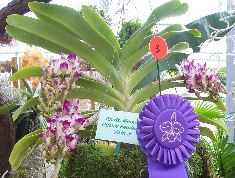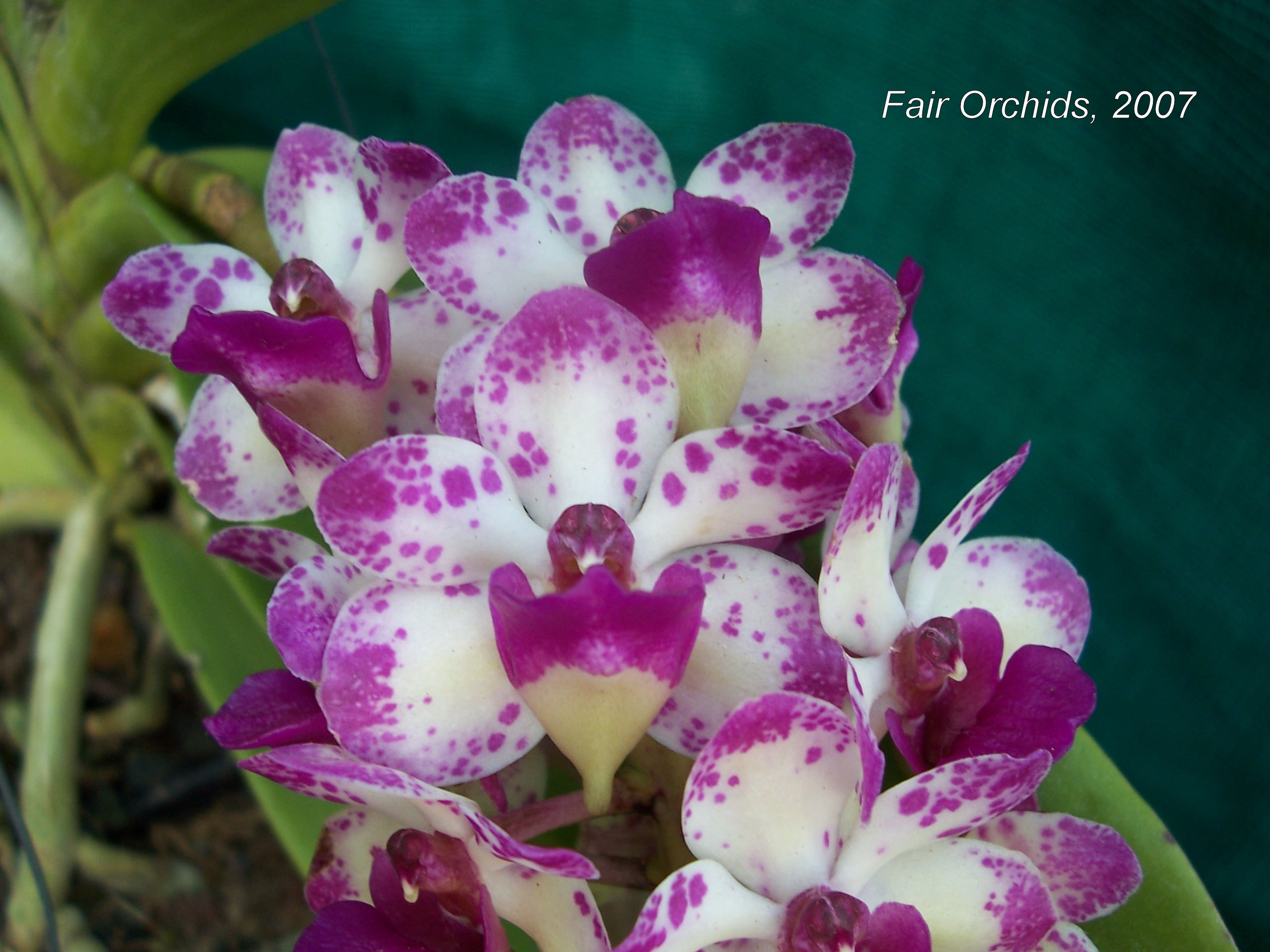The Vandaceous group includes the everpresent Phalaenopsis hybrids, but my interest centers on Vanda, Ascocentrum, Aerides, Rhynchostylis & Neofinetia, and in particular on intergeneric crosses made with these and other related genera.
While many can be difficult to bloom in the Northeastern US, they are not impossible. For those new to the group, I recommend starting with Neofinetia and Rhynchostylis hybrids. Those plants tend to be more tolerant of the temperatures and light levels we can offer in NJ.
True Vandas demand high light level, and in most cases fairly warm temperatures (> 80F). Hybrids dominated by V. coerulea (with blue flowers) tend to be cooler growing, and V. tricolor accepts Cattleya conditions.
Modern hybrids can have flowers exceeding 6" diameter, and the color range is incredible. Most Vandas are very large plants, with adventurous root systems reflecting their origin in the tree tops, clinging to branches.
Several of the species are of moderate size, Vanda lamellata 'Noel Akhtar' HCC/AOS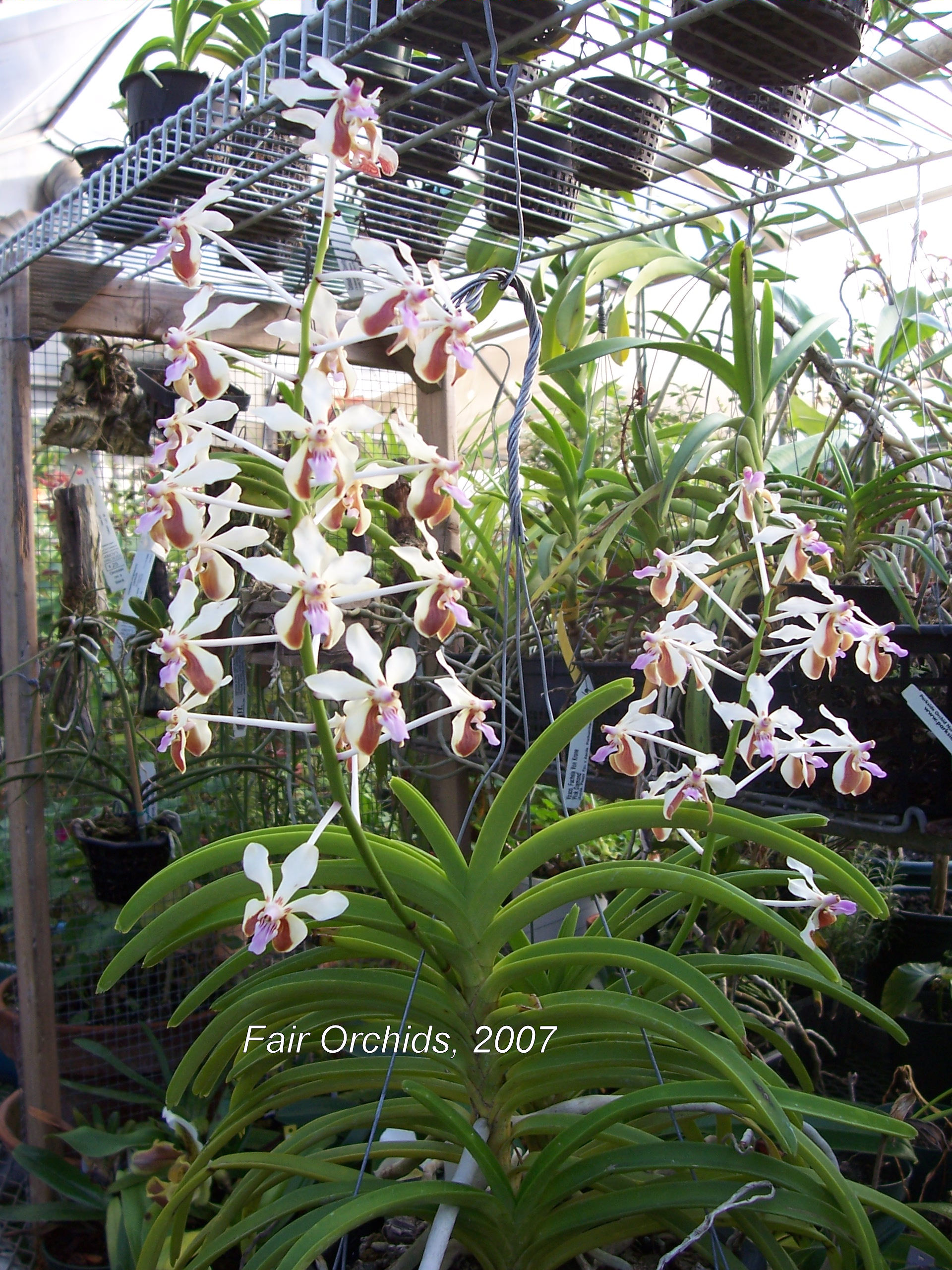
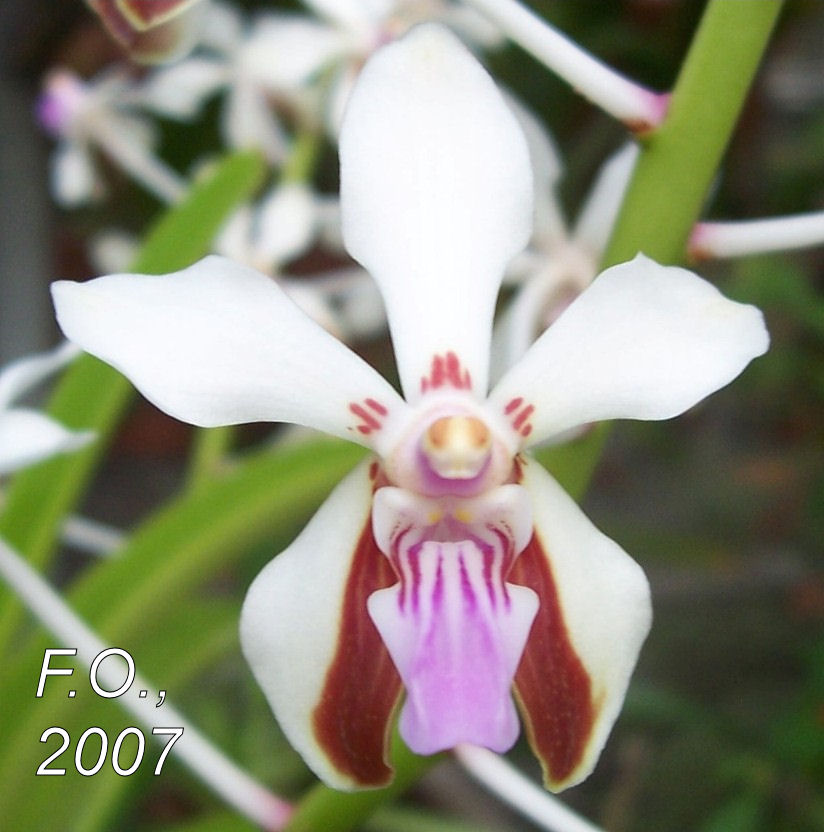
But the hybrids tend to be much larger than the species, Vanda Wirat 'Blue Sky'
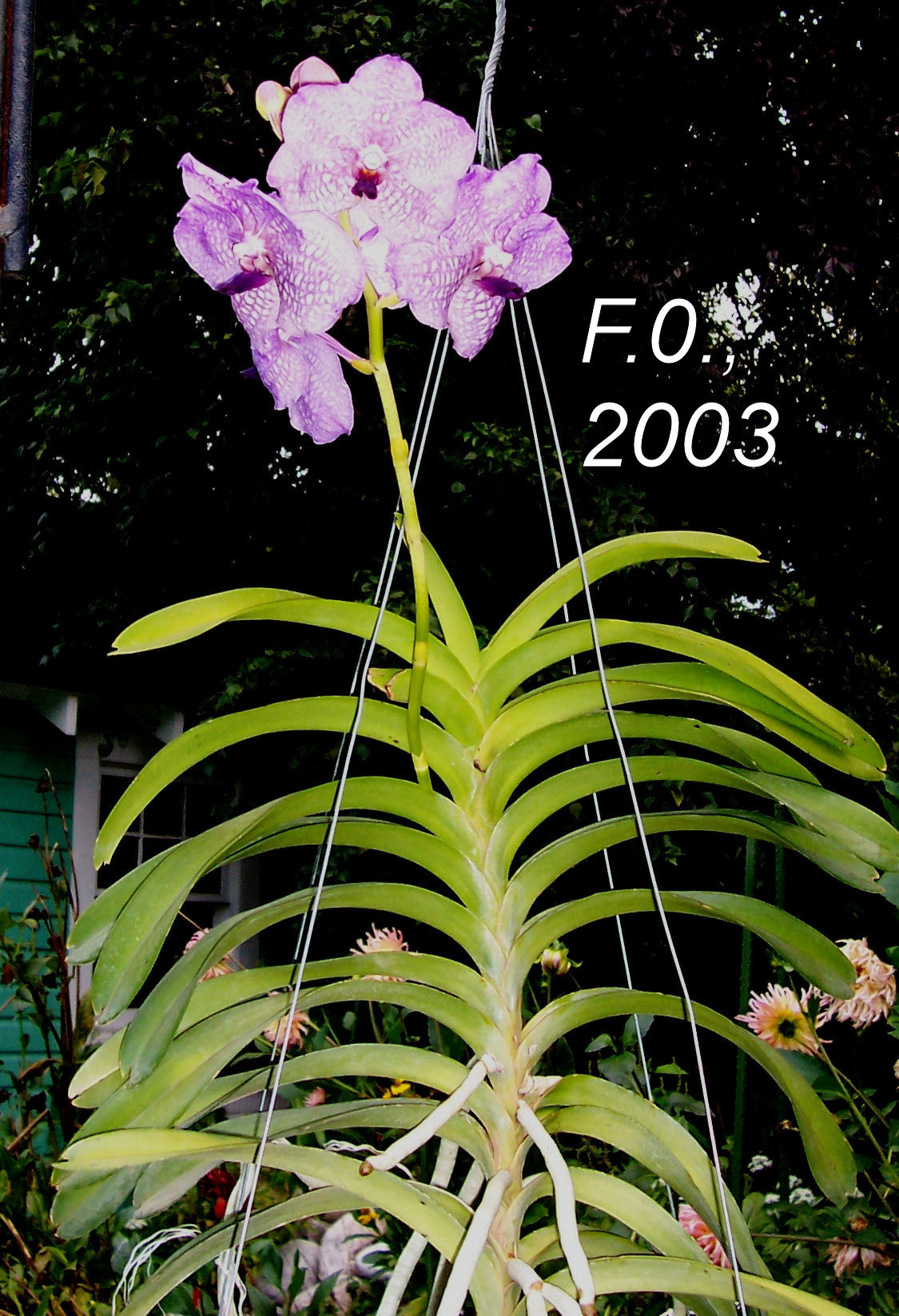
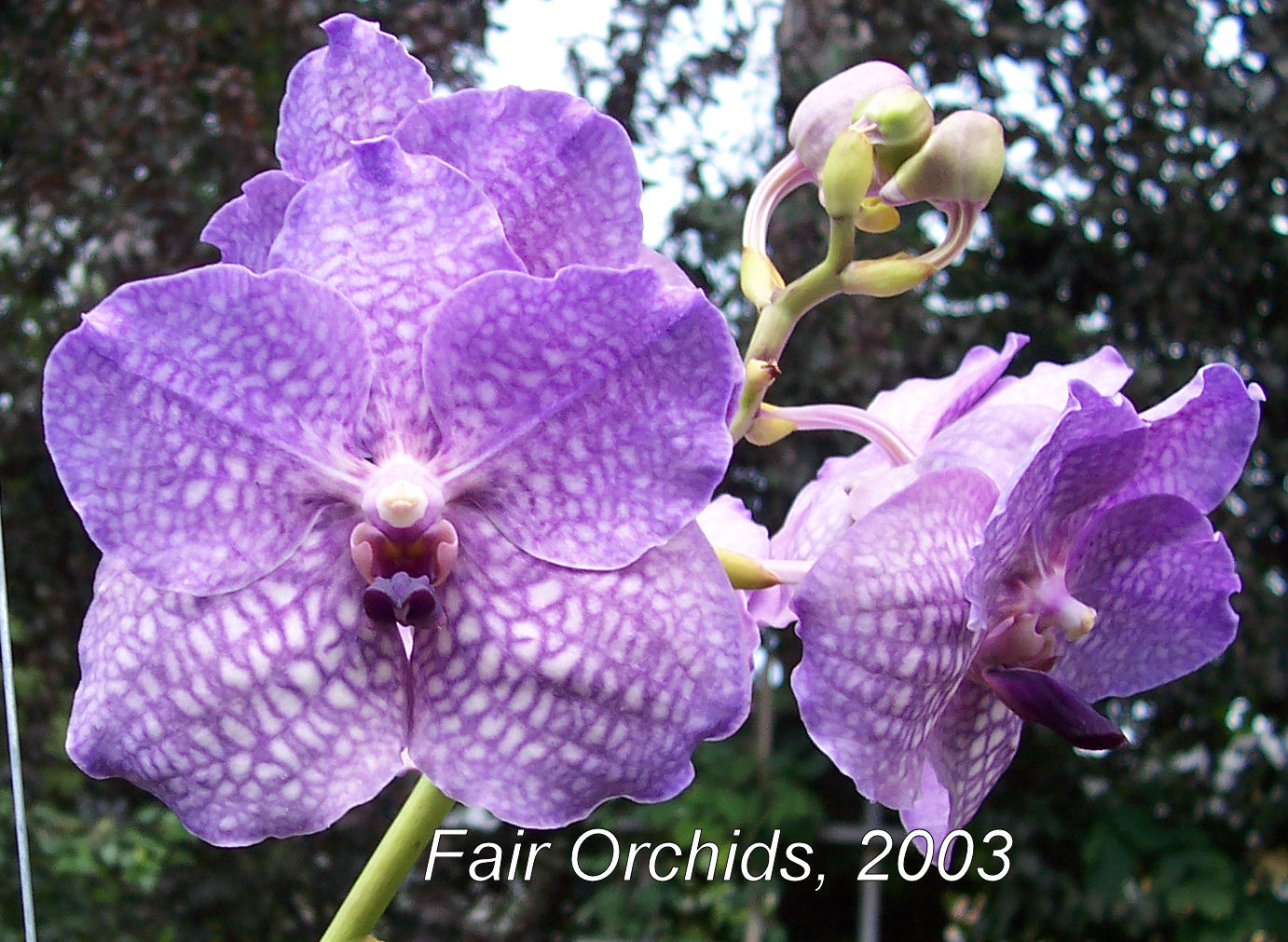
This one bloomed on a somewhat smaller plant, Vanda (Tanu Gold x Rasri Gold)
 100_0007 FO.jpg?timestamp=1330623014025)
Crossing Vanda with the much smaller Asco-centrum creates Ascocenda hybrids. Initially this led to reduced plant size, more vibrant colors and plants significantly easier to grow. Most hybrids use Asctm curvifolium. (red) or Asctm. miniatum (orange).
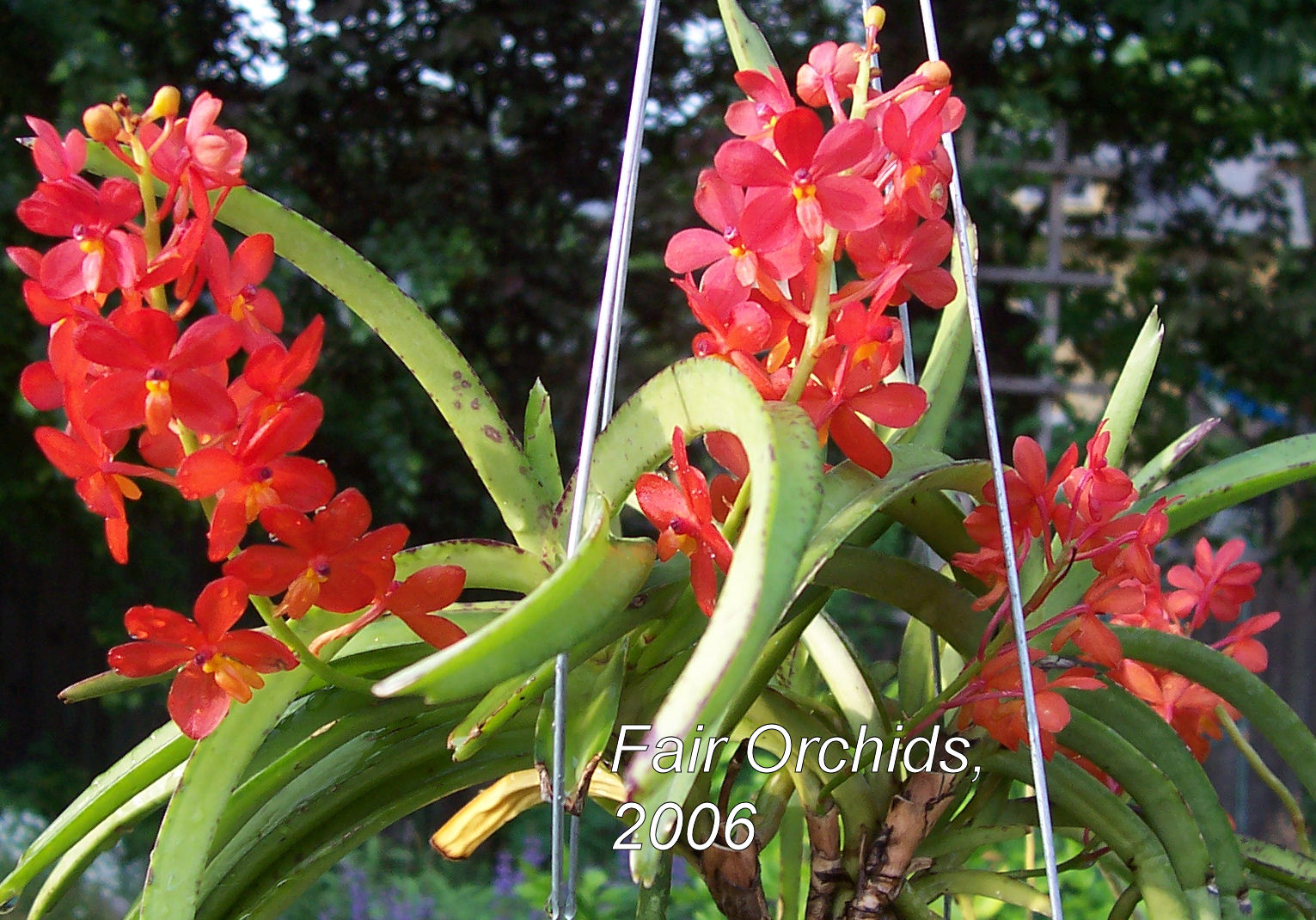
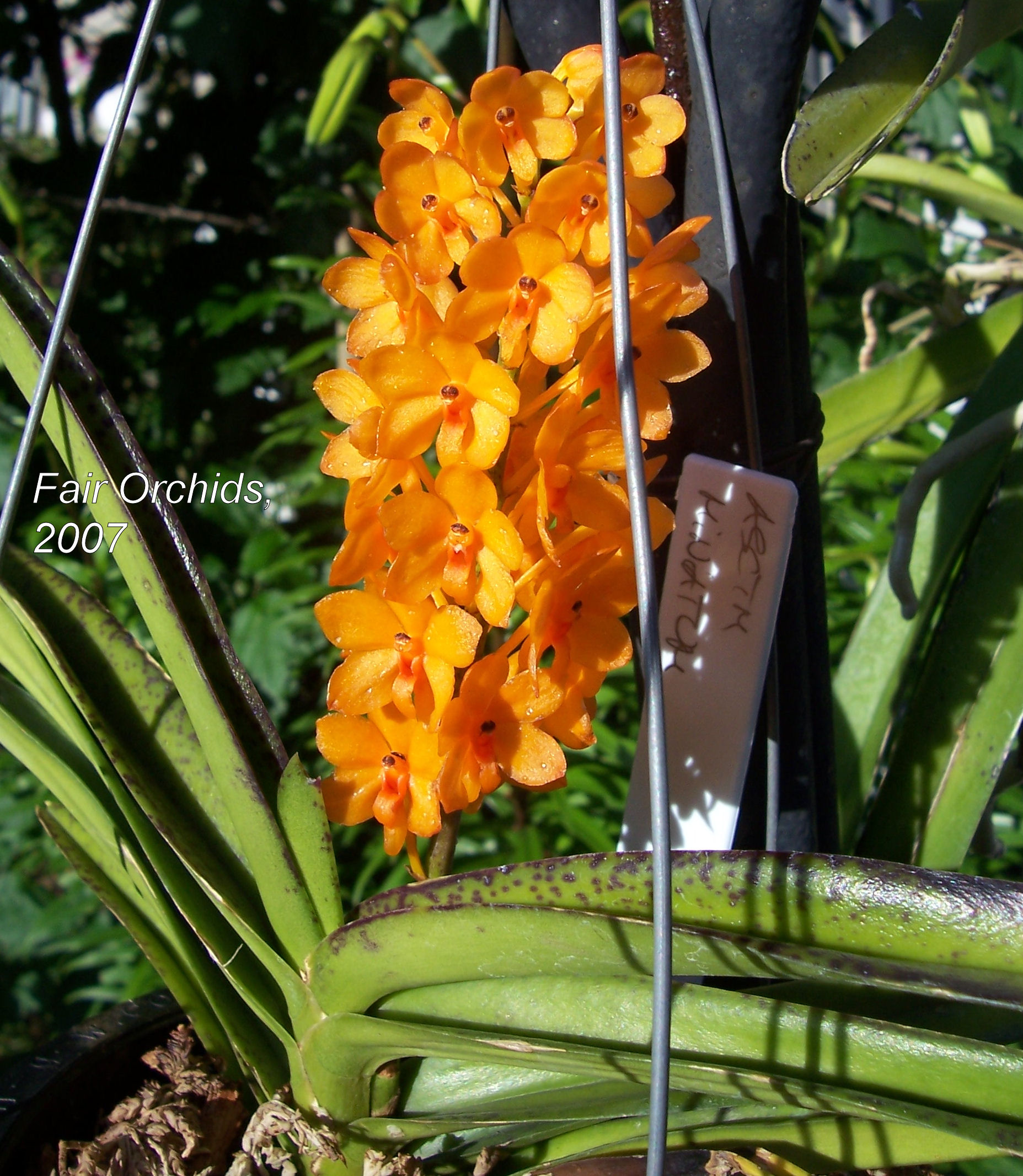
Compare an Ascocenda (25% curvifolium, 25% miniatum & 50% Vanda) in a 6" basket, to a 100% Ascocentrum hybrid (miniatum x garayii) in a 4" basket.
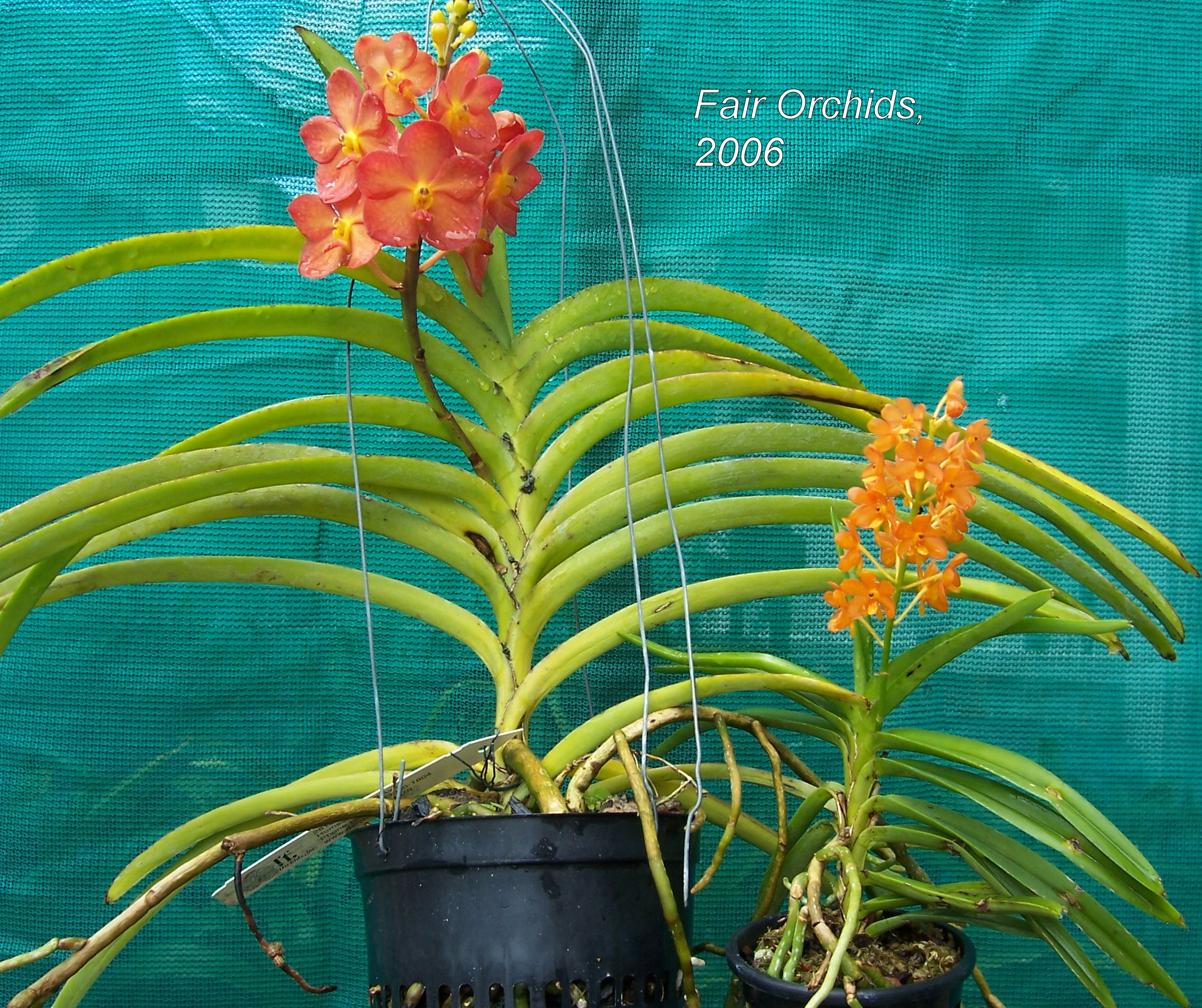
To increase the flower size, breeders have repeatedly bred Ascocendas back to Vanda, so many Ascocendas sold today are more than 90% Vanda, and no longer so easy to grow and bloom. Ascda. Fat Tuesday:
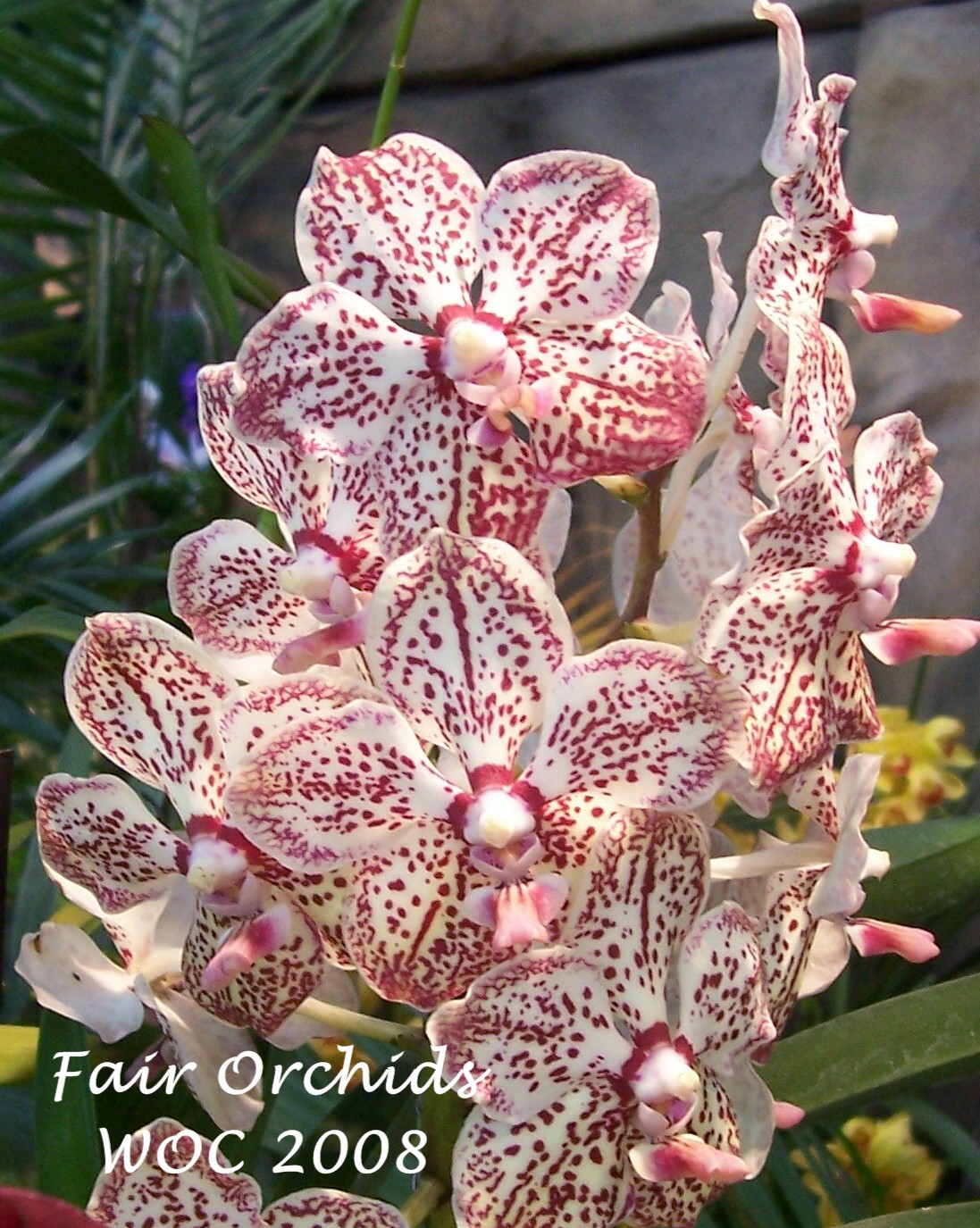
Ascda. Fuchs Sunglow 'Starlyn' AM/AOS
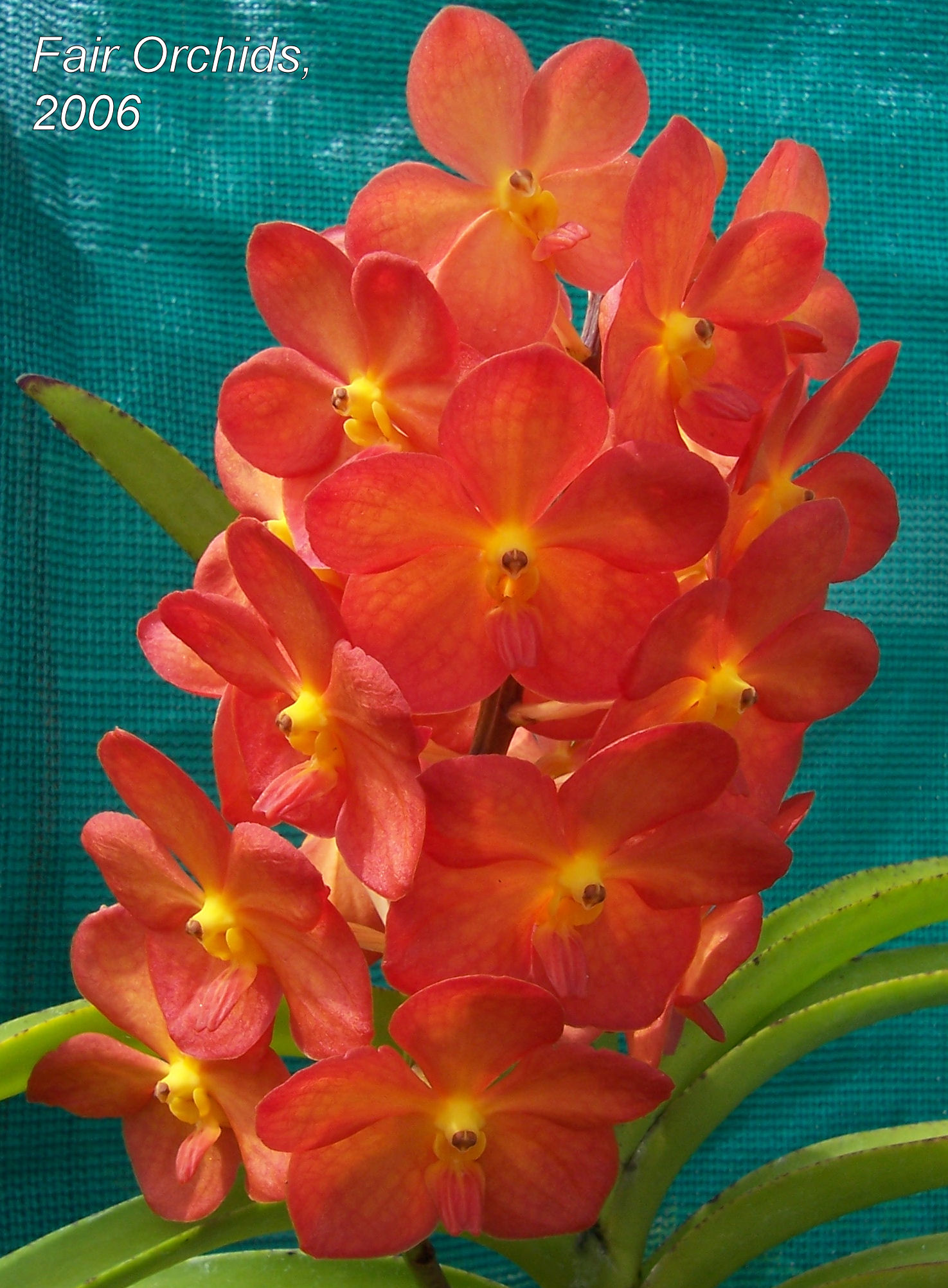
Orchids have limited genetic barriers to breeding across related genera. This has led to many interesting intergeneric hybrids in recent years.
Neofinetia falcata is a Japanese species, which does well under temperate conditions Compact, and fragrant in the evening.
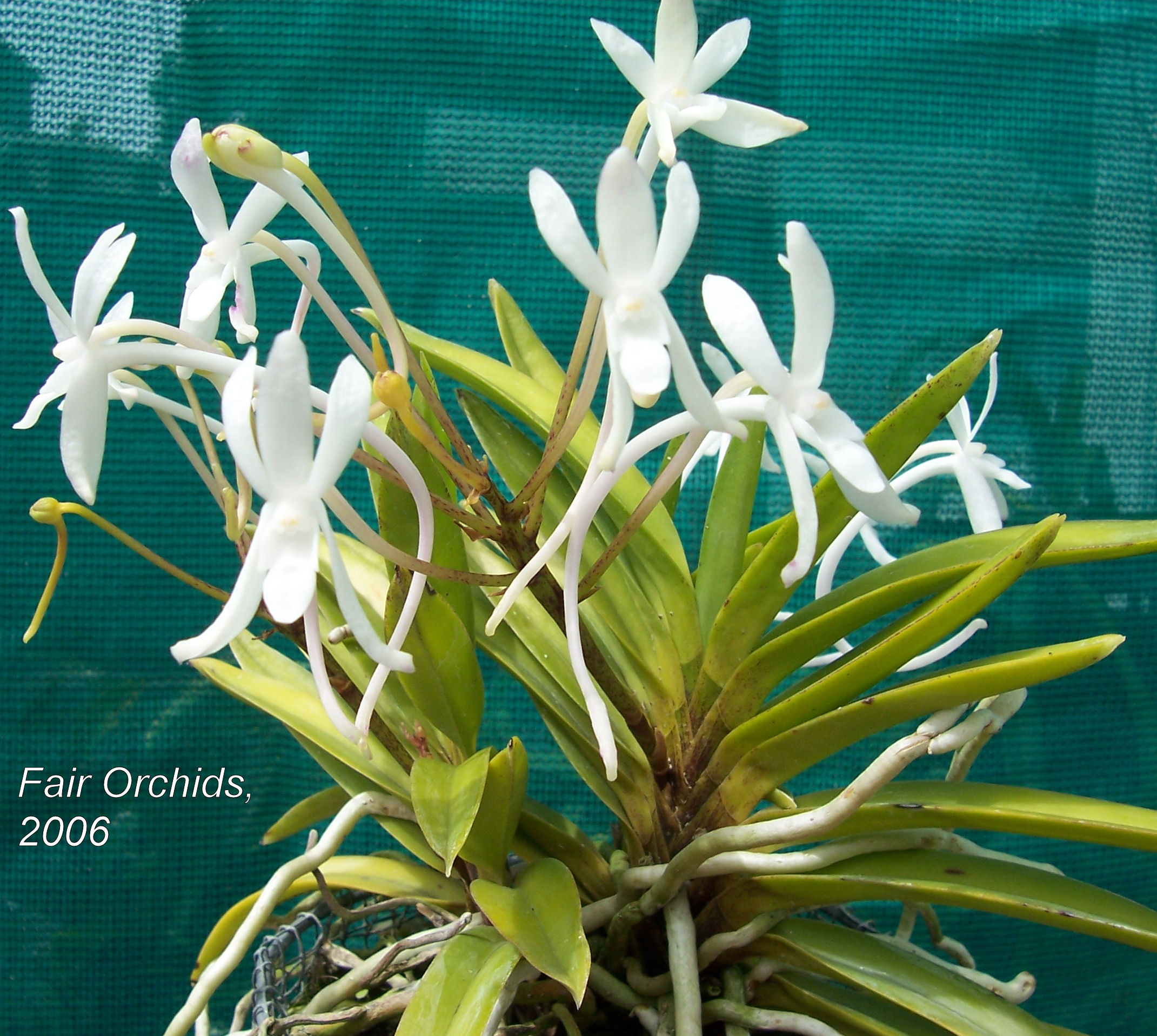
N. faclacata produces many compact hybrids, which are easy to grow & bloom. Here Rumrillara Margaret's Jewels.
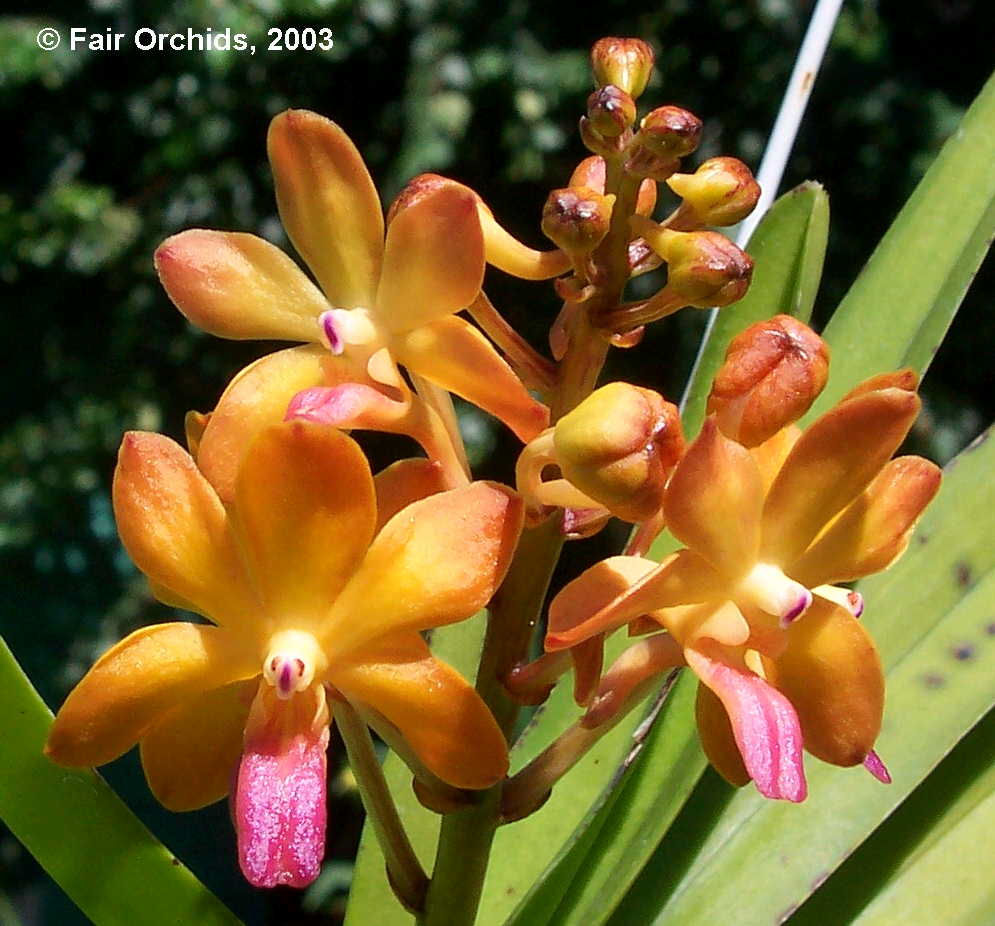
 070405 027 FO.jpg?timestamp=1330624647800)
I am partial to hybrids with Rhyncostylis. Most are based on Rhyn. coelestis, which is cool growing, making hybrids easier to handle under intermediate growing condi-tions..One example is Vascostylis Fuchsia Von Krone 'Pink Delight'.
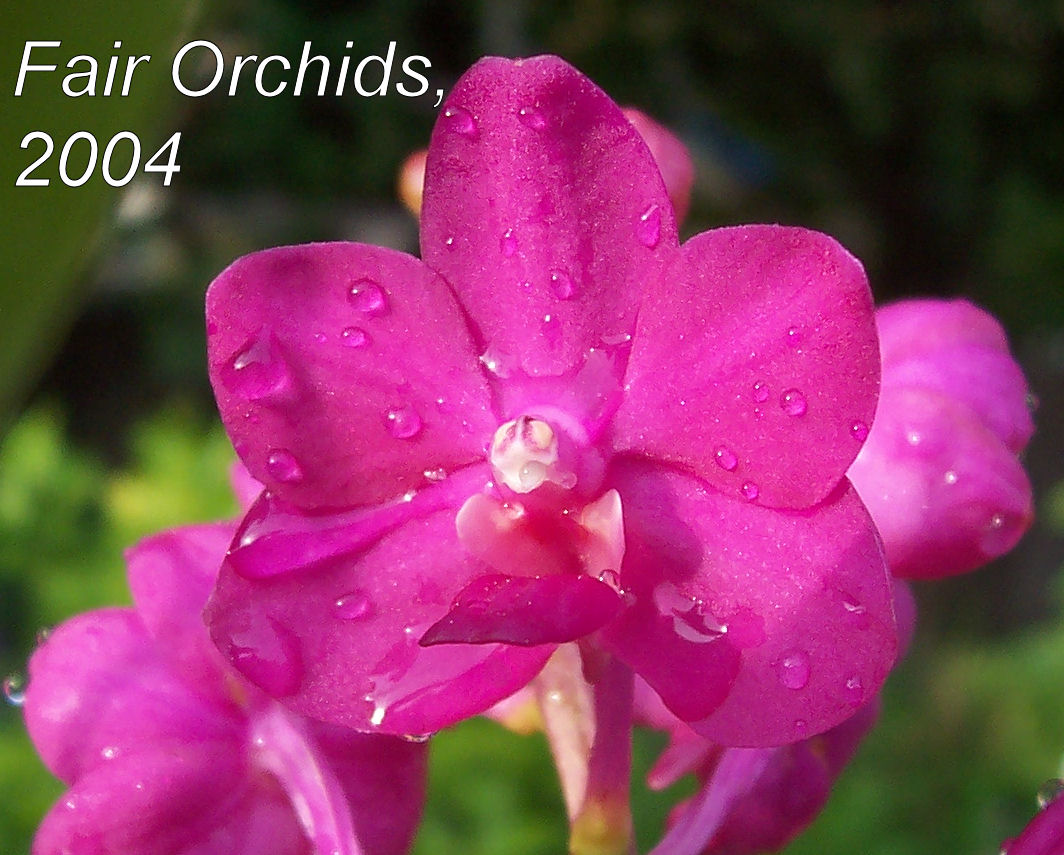
When the larger Rhyn. gigantea is used, the plants bedome too large for home growing. Here Rhyn. gigantea x Aerides falcata = Rhycorides Memoria Gustav Feddersen
